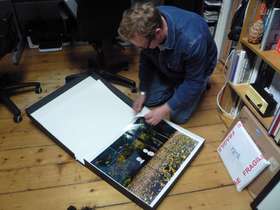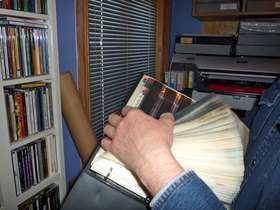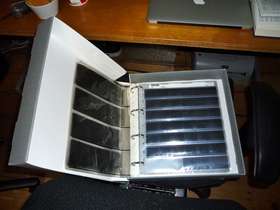How the archive is organised
What state is it in; how is the archive organised?
Power digitises the negatives of his best work with an Imacon X5 scanner, which enables him to undertake the work at a high level and at home. (It's a 'virtual drum'scanner' and probably gives the best quality scanning available without actually using a drum scanner.) Power has four x 4TB Glyph Professional hard drives in his studio and his assistant, Murray Ballard, has back-ups of all these in his own home. They try to back up new work almost immediately.
Power's negatives are mostly held at Magnum (certainly all the best ones) and are in dust-free, archival, negative binders. (Magnum in London has a temperature and humidity controlled storeroom with a 30 minute fire door). All the negatives from his project work were transferred to good quality negative file boxes some time ago (a bit of paid work by his children), while some older, second rate negatives are still in ring-bound negative folders.
His contact sheets are all stored in archival boxes, with the ones he is less interested in stored in non-archival boxes.
For each project, Power keeps a set of 20 x 24 inch prints in archival boxes and he keeps careful track of his work and where it goes. Power consistently tells his students that it's important that they continue to make real prints from their digital files, "so there is something real and tangible, rather than just a series of ones and zeros on a hard drive that may not be readable in the future."
“When I started working in colour, I tried to keep that system going, archiving prints as I went. I didn’t know why I was doing it ... I never really thought it would be worth something, but I suppose I hoped that one day, it might be. The fact that I have tried my best to always keep at least one good set of every project is somnething I'm quite proud of. I'm extremely pleased that I found the time to do so,” says Power. Whilst this approach has not worked for every project, Power has been able to retain a set of prints from most commissions.
Power makes very few ink-jet prints – most have been disposed of over the years as technology has improved. He prefers c-type prints made with an enlarger or, in the last few years, c-type prints made from digital files that he prepares himself with his assistant's help.
Recently, the New Art Gallery, Walsall, acquired four large prints from the Black Country Stories series for their collection (the Gallery paid for the production of the work), and Power gave a set of 20 x 24 inch prints to Multistory.


